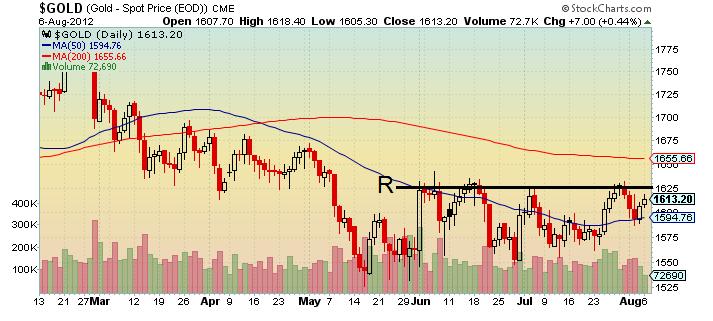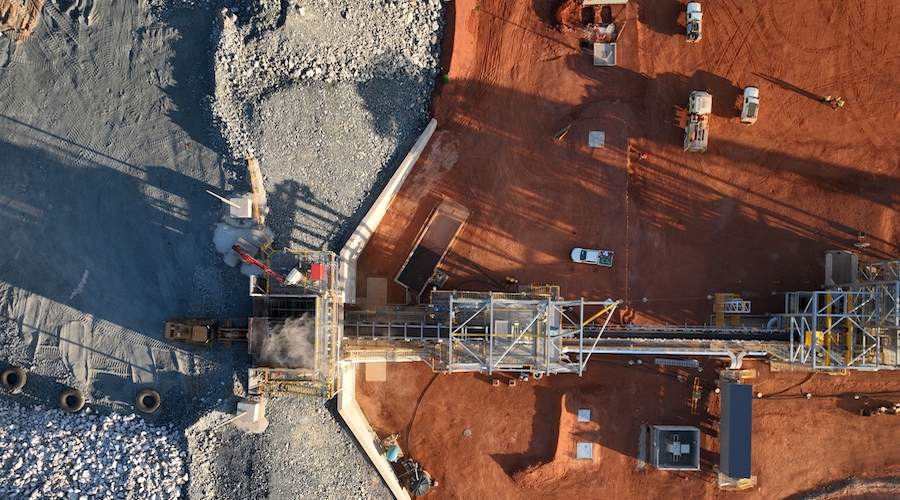As the current financial problems are bound to get worse, it is essential to accumulate gold
Even though the European Central Bank and the US Federal Reserve failed to deliver any new stimulus programmes last week, the price of gold has managed to remain above $1600 an ounce.
Perhaps the most disappointing news regarding monetary policy came from the ECB. The ECB refrained from announcing any fresh monetary stimulus plans and maintained its key interest rate at 0.75%. However, Draghi, did indicate that the bank will join forces with governments to buy sovereign bonds in sufficient quantities to remove all doubts about the future of the euro. The ECB also made it clear that while the bank may take further measures to bring current high borrowing costs down, struggling countries must act and take responsibility for their finances.
On July 26, ECB President, Mario Draghi, said “within the mandate,” policymakers are ready “to do whatever it takes to preserve the euro” and he affirmed that the measures would be “enough”.
Although Draghi’s statements raised expectations that the ECB would restart the bond buying program or announce some form of additional stimulus program, Draghi failed to reassure investors that he was ready to take immediate steps to support the euro. And during his press conference, US equities fell the most in a month and Spanish bonds tumbled. Spain’s IBEX 35 retreated 5.2% and the Stoxx Europe 600 Index lost 1.3%. The euro weakened by 0.6% to $1.2155. Crude oil fell by 1.2% to $87.82 a barrel in New York. The yield on Spain’s 10-year bond jumped 40 basis points to 6.33% and gold was sold off making an intra-day low of $1582.60 an ounce in the US session on Comex.
One minute the ECB chief says the central bank will do whatever it takes to preserve the euro, and then the next minute, the ECB fails to follow through with any appropriate action. Not that it means anything, but even OECD Secretary General Angel said the ECB is the only institution with the firepower to respond to the Eurozone crisis. At the recent Global Investment Conference, on July 26, Gurria mentioned how the ECB has the power of a bazooka and that it should be used to resolve the on-going debt crisis of the Eurozone. Frankly, I have no idea what the OECD has got to do with the current debt crisis in the Eurozone.
The mission of the Organisation for Economic Co-operation and Development (OECD) is to promote policies that will improve the economic and social well-being of people around the world. Frankly, I cannot see that it has improved the well-being of anyone. The OECD is funded by its member countries. National contributions are based on a formula which takes account of the size of each member’s economy. The largest contributor is the United States, which provides nearly 22% of the budget, followed by Japan.
While one of its responsibilities is to fight corruption in the public sector, judging by the level of corruption in one of its member states, namely South Africa, the OECD has failed miserably. Yet, it has managed to spend millions searching for a few individuals who may have used offshore banking to protect their assets. And, the amounts involved are a fraction of the amounts government officials have stolen by overpricing government tenders and governments procurements only to pocket the difference. Perhaps Gurria should concentrate more on using his resources properly instead of offering advice on how to solve the debt crisis in the Eurozone.
Last Wednesday, and as expected, after a two day FOMC meeting of the U.S. Federal Reserve, policymakers failed to deliver any new measures to stimulate the US economy. While there were some market participants hoping for QE3, if the Fed does embark on any such action, we can expect to see it happen closer to the time of the elections. Nevertheless, in his statement Fed Chairman, Ben Bernanke, did acknowledge a contraction of economic growth. He said that “economic activity decelerated somewhat in the first half of this year.” Bernanke also said that the US Fed “will closely monitor incoming information on economic and financial developments and will provide additional accommodation as needed to promote a stronger economic recovery and sustained improvement in labour market conditions in a context of price stability.”
But, only the previous week Bernanke claimed that Operation Twist has been “effective in easing financial conditions and promoting strength in the economy. Large-scale asset purchases have “also contributed to economic growth.” As I mentioned in my previous commentary, what economic growth was he referring to?
It was also decided at the latest FMOC meeting that the Fed will continue swapping $667 billion of short-term debt with longer-term securities to lengthen the average maturity of its holdings, an action dubbed Operation Twist. The central bank will also continue reinvesting its portfolio of maturing housing debt into agency mortgage-backed securities.
The markets were also hit with other disappointing economic news mainly a decrease in manufacturing. China’s official PMI manufacturing unexpectedly dropped to 50.1 in July, its lowest level in 8 months versus expectation of 50.4. UK PMI manufacturing dropped much more than expected from 48.4 to 45.4 in July. The data indicated that UK’s manufacturing sector shrank at the fastest pace in more than three years. The Eurozone PMI manufacturing was also revised down to 42.3 in July. This was then followed by the latest decisions from the Bank of England (BoE) and the European Central Bank (ECB).
Meanwhile unemployment in the Eurozone is the highest since the euro was introduced. The number of people unemployed in the Eurozone increased by 123,000 to 17.801 million in June. It is a new record since data was first collected in 1995 by European Union Statistics Agency. According to data available from Eurostat the unemployment rate increased to 11.2% in the Eurozone. But, it should be noted that there are huge differences between rates of unemployment within the Eurozone. For example, the rate of unemployment in Austria is as low as 4.5% compared to 24.8% in Spain.
A combination of all these problems will only deepen if the central banks refrain from taking any action. And, now that their backs are against the wall they will have to print more money. And, while it is fine for politicians to steal tax payer’s money, it is not fine for individuals to take whatever precautions they need in order to protect their wealth. And, while there are so many rules and regulations imposed against individuals there are none for our banking elite who lie, cheat, steal, and collude to defraud the entire financial system.
As the current problems are only going to get worse, it is absolutely essential to keep a good percentage of your money in precious metals especially gold and silver. If the financial system does collapse due to massive money printing, the value of many fiat currencies will become worthless. While it is difficult to put a time to this, it is important to take precautionary measures now. You must add physical gold and silver to your investment portfolios. Please note that gold and silver bullion does not include limited edition medallions or commemorative medallions which are not investment grade bullion and should be left alone unless you are a collector.
TECHNICAL ANALYSIS
While the price of gold has not yet broken above the key resistance of $1625 (R) an ounce, it remains above the 50 day MA and the upward trend seems to be intact.
About the author
David Levenstein is a leading expert on investing in precious metals . Although he began trading silver through the LME in 1980, over the years he has dealt with gold, silver, platinum and palladium. He has traded and invested in bullion, bullion coins, mining shares, exchange traded funds, as well as futures for his personal account as well as for clients.
His articles and commentaries on precious metals have been published in dozens of newspapers, publications and websites both locally as well as internationally. He has been a featured guest on numerous radio and TV shows, and is a regular guest on JSE Direct, a premier radio business channel in South Africa. The largest gold refinery in the world use his daily and weekly commentaries on gold.
David has lived and worked in Johannesburg, Los Angeles, London, Hong Kong, Bangkok, and Bali.
For more information go to: www.lakeshoretrading.co.za
Information contained herein has been obtained from sources believed to be reliable, but there is no guarantee as to completeness or accuracy. Any opinions expressed herein are statements of our judgment as of this date and are subject to change without notice.
More News
US stocks surge most in 5 years as Trump delays some tariffs
The S&P 500 Index surged more than 7% in afternoon trading.
April 09, 2025 | 11:14 am
Liontown kicks off production at Australia’s first underground lithium mine
Miner said the successful start of underground production stoping from the Mt Mann orebody is a "key milestone".
April 09, 2025 | 10:52 am
Chile mining minister expects short-term copper demand to slow due to tariffs
The country would hope for a competitive advantage at the low-end of tariff range, Mining Minister Aurora Williams said.
April 09, 2025 | 09:40 am
{{ commodity.name }}
{{ post.title }}
{{ post.excerpt }}
{{ post.date }}





Comments